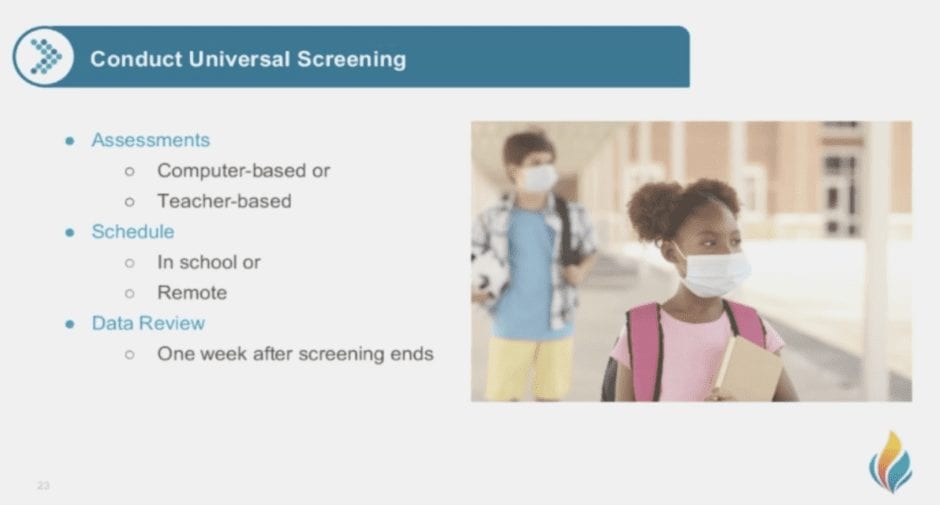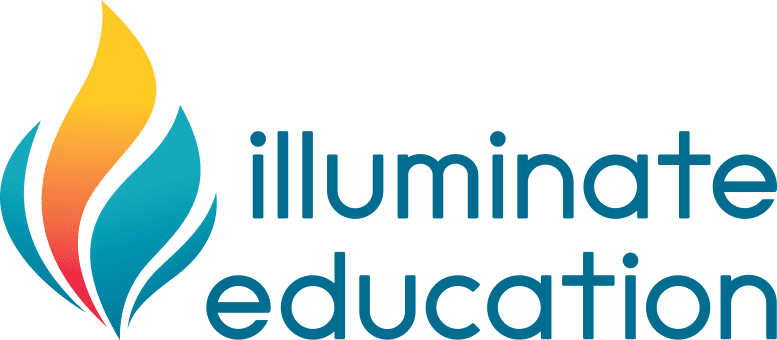Unpacking Research on the COVID Slide and Closing the Gap
By Eileen Belastock
According to an Education Week survey, classroom teachers spent the first six weeks after school closures troubleshooting connectivity and software issues, resulting in a 75% drop in instruction. Even as late as into the spring, classroom instruction was still less than 50% of pre-COVID numbers with district staff and educators challenged to re-engage students with sound instructional practices from a distance.
In a recent edWebinar sponsored by FastBridge Assessment System by Illuminate Education, Dr. John Bielinski, Senior Director of Research and Development, Dr. Rachel Brown, NCSP, Senior Academic Officer, and Dr. Kyle Wagner, NCSP, Research Associate, explained that unprecedented events like COVID-19 create a vacuum of knowledge. According to the presenters, district leaders and teachers need reliable data to guide them to determine how learning has been affected, and remediations to recover critical student knowledge.
Implications of Learning Loss
Through its studies of summer reading programs and data collected from FastBridge Assessment, Illuminate Education reports that summer learning loss varies by household income. Students from low-income households lose about 1.0 to 1.5 months of learning. Also, learning losses vary by reading domain with minimum losses for reading, comprehension, and vocabulary, and more considerable losses on early reading skills, including phonics and fluency. Illuminate Education usually estimates learning loss across the summer by comparing the spring scores from one grade to fall screening scores from the next grade for the same students. This fall, due to the loss of learning for at least four months last spring, all of the skills that students were just starting to acquire in the winter and the spring of the school year vanished.
Addressing Instructional Loss
Three main components that are critical for addressing instructional loss include conducting universal screening, adjusting core instruction, and considering additional resources and remediation. Universal screening in reading, math, and behavior establishes a baseline for all students. The logistics are significant, so steps such as selecting the assessment, creating a schedule, and reviewing data will ensure a holistic group-level approach rather than addressing piecemeal student by student. The next step in providing support to students is for districts to examine core instruction using the 80% rule. If less than 80% of students have met the learning benchmark, which is more likely to be the case this year, the presenters strongly recommend intensifying core instruction. The way to strengthen instruction includes using widely used strategies and tools that look at the frequency of instruction, the number of instructional days, the duration of lessons, and the practice opportunities students have during and between lessons.
Key Recommendations
Fall screening is essential to ensure that school leaders and educators understand where students are when they return to school. The presenters caution that the primary grades’ most significant anticipated losses will require several months of remediation and intense instruction. The more aggressively school districts decide to address gaps and provide accelerated instruction, the lesser the long-term effect that the loss of learning due to COVID-19 will have on students for years to come.
This edWeb broadcast was sponsored by FastBridge Assessment System by Illuminate Education.
This article was modified and published by eSchool News.
About the Presenters
Dr. John Bielinski is a psychometrician by training and has led the development of educational tests and educational research in the industry for 20 years. Dr. Bielinski began his career in education policy at the National Center on Educational Outcomes and joined FastBridge in 2018. His expertise is in CBM and modeling growth.
Dr. Rachel Brown joined FastBridge in 2015 after teaching at the University of Southern Maine for 16 years. She has experience as a general education teacher, special educator, and school psychologist. Her area of expertise is Multi-Tiered Systems of Support. She splits her time between Alaska and Maine.
Dr. Kyle Wagner is a research associate at Illuminate Education. He has several years of experience as a school psychologist in Texas and Minnesota. He also has several publications and presentations on topics including psychometrics, curriculum-based measures, and academic intervention. Kyle is currently working with the FastBridge suite of products at Illuminate Education.
Join the Community
Innovation in Education is a professional learning community on edWeb.net that brings together teachers, administrators, researchers, and policy-makers to foster collaboration in improving education.
Illuminate Education partners with K-12 educators to equip them with data to serve the whole child and reach new levels of student performance. Our solution brings together holistic data and collaborative tools and puts them in the hands of educators. Illuminate supports over 17 million students and 5200 districts/schools.
Eileen Belastock, CETL is the Director of Technology and Information for Nauset Public Schools, MA, and also works with edWeb.net to write articles on their professional learning edWebinars. You can follow Eileen on Twitter @EileenBelastock.






Comments are closed.